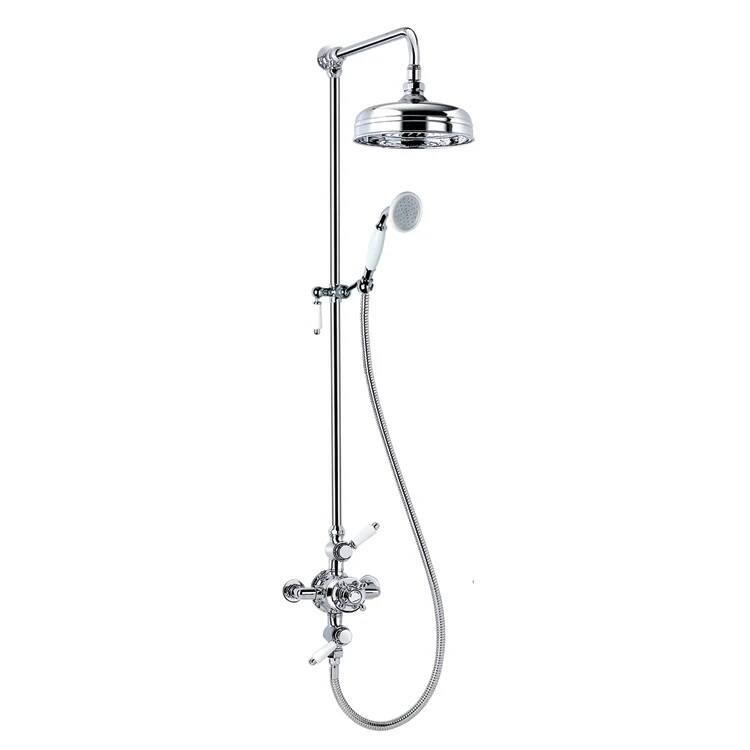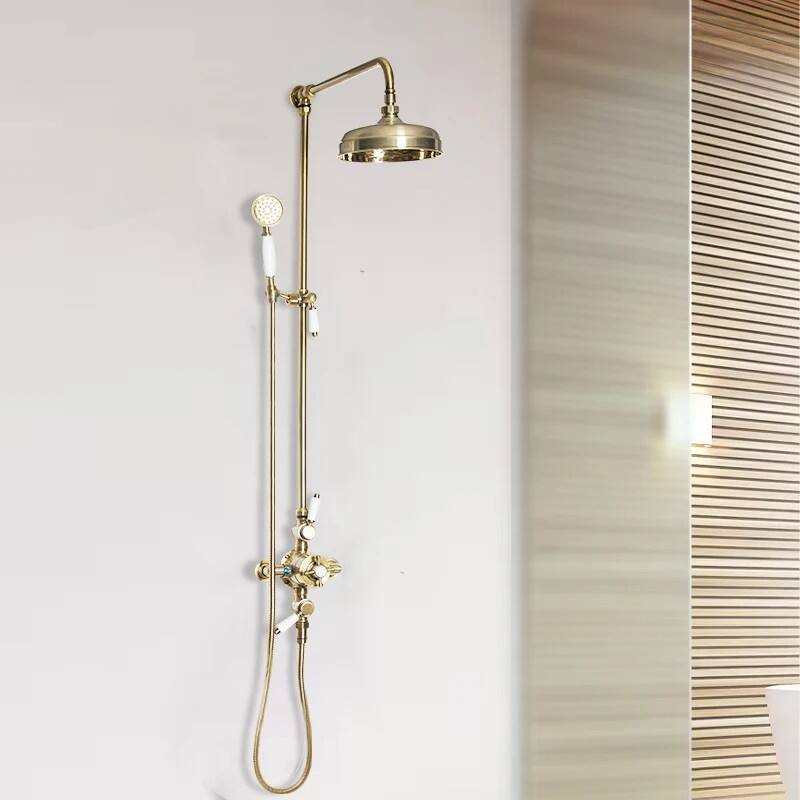The Science Behind Perfect Shower Temperature Control
A thermostatic shower valve represents a remarkable feat of engineering that revolutionizes the daily shower experience. This sophisticated device continuously monitors and adjusts water temperature, ensuring consistent comfort regardless of other water usage in your home. Understanding how a thermostatic shower valve works reveals the intricate technology that delivers that perfect shower experience every single time.
Understanding Thermostatic Valve Technology
Core Components and Mechanisms
At the heart of every thermostatic shower valve lies a temperature-sensitive element, typically constructed from wax or bi-metallic strips. This element expands and contracts in response to water temperature changes. When connected to a precision-engineered valve mechanism, it automatically adjusts the mix of hot and cold water flowing through the system. The thermostatic shower valve contains separate controls for temperature and water flow, allowing users to set their preferred temperature and maintain it consistently.
The internal components work in perfect harmony, with the thermostatic element acting as the brain of the operation. As water temperatures fluctuate, the element responds within fractions of a second, adjusting the valve position to maintain the desired temperature. This rapid response prevents sudden temperature spikes or drops that could cause discomfort or potential scalding.
Temperature Regulation Process
The temperature regulation process begins the moment you turn on your shower. The thermostatic shower valve immediately starts monitoring the incoming water temperature. When it detects any deviation from the set temperature, it triggers an automatic adjustment. For example, if someone flushes a toilet and cold water pressure drops, the valve instantly reduces hot water flow to maintain the perfect balance.
This constant monitoring and adjustment happen seamlessly, often without the user even noticing. The valve can typically maintain temperature accuracy within ±2°F (±1°C), ensuring exceptional comfort and safety. This level of precision far exceeds what's possible with traditional manual mixing valves.
Safety Features and Benefits
Anti-Scalding Protection
One of the most crucial safety features of a thermostatic shower valve is its built-in anti-scalding protection. The valve includes a safety stop that prevents users from accidentally selecting dangerously high temperatures. This feature is particularly important in homes with children, elderly residents, or anyone with sensitive skin.
In the event of a cold water supply failure, the thermostatic shower valve immediately shuts off the hot water flow, preventing potential scalding incidents. This rapid response mechanism has made these valves a preferred choice in healthcare facilities, schools, and modern homes where safety is paramount.
Energy Efficiency Advantages
The precise temperature control offered by thermostatic shower valves contributes significantly to energy efficiency. By maintaining exact temperature settings, these valves eliminate the need for constant manual adjustment and reduce water waste. Users can step into a perfectly temperatured shower immediately, rather than running water while adjusting to find the right temperature.
Studies have shown that households using thermostatic shower valves can reduce their water consumption by up to 15% compared to traditional manual valves. This reduction in water usage translates directly to lower energy costs for water heating, making these valves an environmentally conscious choice.

Installation and Maintenance Considerations
Professional Installation Requirements
While thermostatic shower valves offer superior performance, proper installation is crucial for optimal function. The installation process requires careful consideration of water pressure balance, proper sealing, and accurate calibration. Professional plumbers understand the importance of correct positioning and connection to ensure the valve's temperature-sensing element can respond effectively to water temperature changes.
During installation, professionals also verify compatibility with existing plumbing systems and ensure adequate water pressure for proper operation. The thermostatic shower valve typically requires a minimum water pressure of 1 bar for optimal performance, though specific requirements may vary by manufacturer.
Long-term Maintenance Tips
To maintain peak performance, thermostatic shower valves benefit from regular maintenance. Scale buildup can affect the valve's responsiveness over time, particularly in areas with hard water. Periodic cleaning and descaling help ensure smooth operation of the temperature-sensitive element and moving parts.
Most manufacturers recommend annual maintenance checks, which include inspecting seals, cleaning filters, and testing the anti-scald mechanism. Simple maintenance tasks, such as regularly wiping down external surfaces and occasionally exercising the temperature control to prevent sticking, can significantly extend the valve's lifespan.
Frequently Asked Questions
How long do thermostatic shower valves typically last?
A well-maintained thermostatic shower valve can last 15-20 years or more. Regular maintenance and proper installation significantly influence longevity, while water quality and usage patterns also play important roles in determining the valve's lifespan.
Can thermostatic shower valves be retrofitted to existing showers?
Yes, most existing shower systems can be upgraded with a thermostatic shower valve. However, the installation should be performed by a qualified plumber who can ensure proper fitting and compatibility with your current plumbing configuration.
What makes thermostatic valves different from standard mixer taps?
Unlike standard mixer taps that require manual adjustment to maintain temperature, thermostatic shower valves automatically compensate for pressure and temperature fluctuations. They offer superior safety features, more precise temperature control, and separate controls for temperature and water flow.


